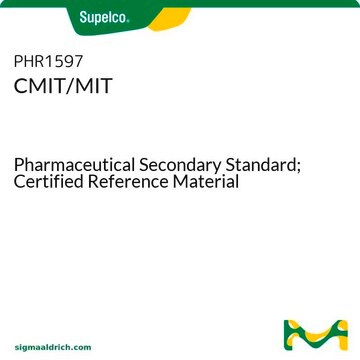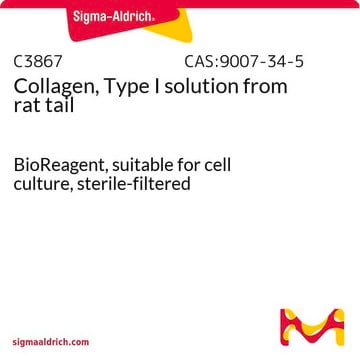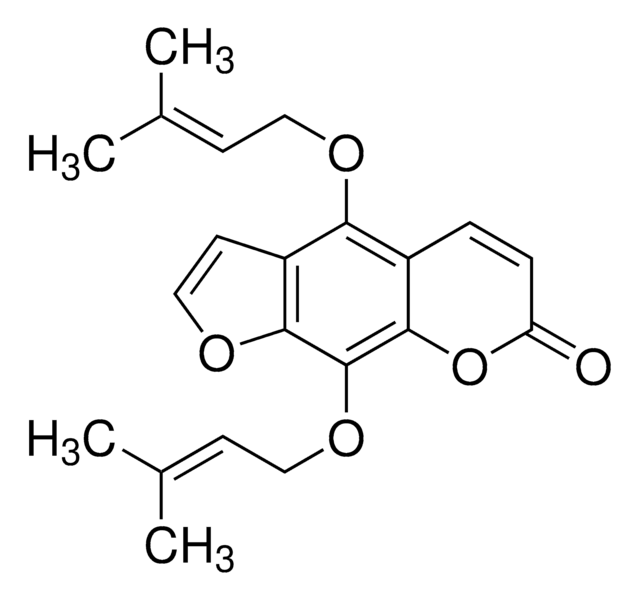SBR00031
MIT HCl Ready Made Solution
(10 mg MIT/mL)
Synonyme(s) :
2-Methyl-1,2-thiazol-3-one, Methylisothiazolinone HCl, Methylisothiazolinone hydrochloride
About This Item
Produits recommandés
Forme
liquid
Niveau de qualité
Concentration
(10 mg MIT/mL)
1%
Mode d’action
protein synthesis | interferes
Température de stockage
2-8°C
InChI
1S/C4H5NOS.ClH/c1-5-4(6)2-3-7-5;/h2-3H,1H3;1H
Clé InChI
SJXPQSRCFCPWQQ-UHFFFAOYSA-N
Vous recherchez des produits similaires ? Visite Guide de comparaison des produits
Description générale
Application
- in research on the effects of the N-methyl D-aspartate (NMDA) receptor antagonist kynurenic acid on human cortical development [1]
- as a cytotoxic substance to investigate its effect on bronchial epithelial cells (BEAS-2B cells) and its role in apoptotic cell death
- to research the effects of tyrosine phosphorylation on focal adhesion kinase (FAK) activity in the development of neural axons and dendrites
Actions biochimiques/physiologiques
Caractéristiques et avantages
- Ready available solution reduce the need for preparation time
- Commonly used in Cell Biology and Biochemical applications
- High quality antibiotic suitable for mulitple research applications
Autres remarques
Mention d'avertissement
Warning
Mentions de danger
Conseils de prudence
Classification des risques
Aquatic Chronic 3 - Eye Irrit. 2 - Skin Irrit. 2 - Skin Sens. 1
Code de la classe de stockage
12 - Non Combustible Liquids
Classe de danger pour l'eau (WGK)
WGK 2
Point d'éclair (°F)
Not applicable
Point d'éclair (°C)
Not applicable
Faites votre choix parmi les versions les plus récentes :
Certificats d'analyse (COA)
Vous ne trouvez pas la bonne version ?
Si vous avez besoin d'une version particulière, vous pouvez rechercher un certificat spécifique par le numéro de lot.
Déjà en possession de ce produit ?
Retrouvez la documentation relative aux produits que vous avez récemment achetés dans la Bibliothèque de documents.
Active Filters
Notre équipe de scientifiques dispose d'une expérience dans tous les secteurs de la recherche, notamment en sciences de la vie, science des matériaux, synthèse chimique, chromatographie, analyse et dans de nombreux autres domaines..
Contacter notre Service technique






